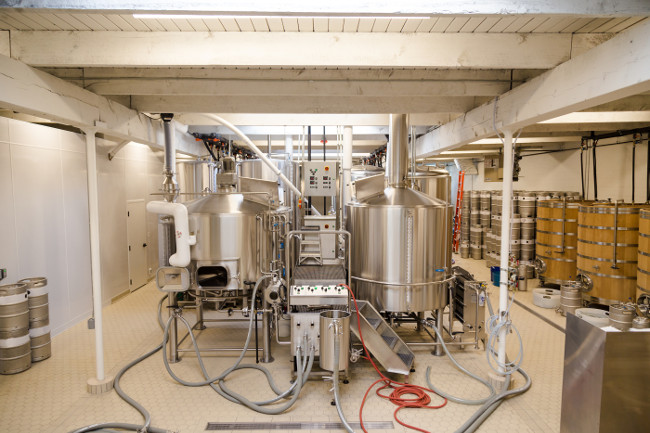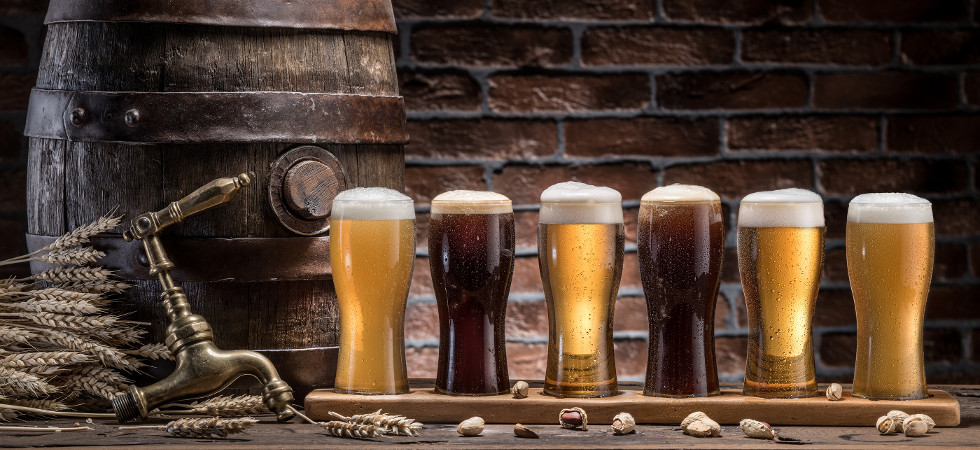During the calendar year of 2017, the craft beer market in the UK grew by a whopping 23%. Despite all the uncertainty surrounding Brexit and the affect it will have on the alcoholic drinks industry, the UK can only boast positives when it comes to this ‘hopping’ craze. A tax break introduced back in 2002, which allowed micro-breweries who were producing less than 5,000 hectolitres to pay less 50 per cent less tax than large brewers, has saw the UK’s number of breweries rise above 2,000 for the first time since before WWII.
With 6.5% of all beers sold in the UK believed to be owing to the craft beer movement, the industry is proving to be of particular worth. Now you’re asking yourself how to do I get involved in this booming revolution? Well, not to fear, here gas bottle supplier Flogas, take a look at how you would potentially start up your own micro-brewery, examining some of the challenges you might face.
Importance of equipment
Unfortunately, determination doesn’t translate simply into profit — you could be the most passionate brewer in the world, but if you’re not making money, you’re going to slip under. One way to ensure this doesn’t happen is to choose an energy strategy that will reduce your usage and keep costs down. Microbreweries can be notoriously difficult to get off the ground financially, so by doing this, you can help boost your company’s profit margins.

Selecting the right equipment is crucial in ensuring the recipe hits the nail on the head. One of the main components in the brewing process is the mash system, which is commonly made up of the following:
Mash tank – Steeps barley into hot water and converts grain starches into fermentable sugars.
Lauter tun – Separates the wort (or liquid) from the solids of the mash (much like a sieve).
Steam generator – Heats the kettle, which is then brought to a controlled temperature before the hops are added.
Malt mill – Crushes the grain in preparation for brewing.
Wort pump – Re-circulates the mash for a higher efficiency, enhancing the clarity and quality of the brew.
Plate heat exchanger/wort chiller – Quickly cools the hot wort ready for fermentation.
Don’t be lulled into a false sense of security however, as this is just one stage — the journey has only begun. This is just the mashing stage! Further to this, you’ll need a fermentation system (where yeast is added and sugar turns into alcohol), a cooling system (to prevent bacteria growth and where beer can be stored ready for sale), a filtering system (to get rid of sediment for a higher-quality product) and, of course, not forgetting the sterilisation equipment (to ensure that bacteria doesn’t spoil your next batch of beer).
The fuel to the foam
No one is here to suggest that opening up your own business is a walk in the park. Even the shrewdest of operators will feel the pressure when establishing a new start-up. The last thing you want to do then is combine the challenges presented by the brewing process with concerns about the energy source — whether it be extortionate prices or an unreliable supply.
LPG is certainly worth your attention if you are currently using oil or solid fuels, as it is a far cheaper, cleaner, and more efficient fuel form. This means that it could bring you major savings on your energy costs. With the lowest CO2 emissions of any fossil fuel, it’ll also mean a lower carbon footprint for your microbrewery.

Recipe
And it’s not a case of being successful just because you have the right equipment, either. The ingredients you choose will dramatically impact the flavour and consistency of your beer. With so many variations available, the possibilities are endless when it comes to creating something truly unique. But not matter how distinctive the taste, you’ll find all craft beer is made up the following key components:
Water – It might sound like an obvious point as water makes up around 90 percent of any beer. The pH and mineral content of your chosen water, as well as if it’s hard or soft, can also affect the end result.
Barley – Barley plays a key role in the alcohol percentage of your beer and can dramatically affect the body, taste and aroma of your finished product.
Hops – Ever wondered where your favourite beer gets its distinctive flavour? Chances are it’s the hops. There are around 170 variations, meaning there’s plenty of choice when it comes to playing with flavour.
Yeast – An invisible but key ingredient to any good beer – yeast has been used in beer brewing for centuries. Essentially a fungus, yeast eats the sugars created in the malting process. By allowing it to ferment and feed off the sugars, alcohol is created as a byproduct.






















